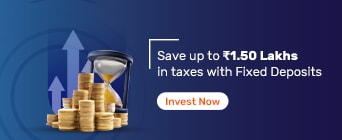Review the latest income tax slab rates, understand the key differences between the old and new tax regimes, and assess the impact of the 2025 Budget on various taxpayers to optimise
Taxpayers can choose between two tax regimes: the old tax regime and new tax regime. Each regime has distinct income tax slab rates and offers different benefits regarding deductions and exemptions.
Old Income Tax Slabs (FY 2025-26)
The old tax regime allows various deductions and exemptions, including under Section 80C, 80D, and House Rent Allowance (HRA). The tax slab rates under the old regime for individuals below 60 years are:
Annual Income |
Tax Rate under Old Tax Regime |
Up to ₹2,50,000 |
Nil |
₹2,50,001 – ₹5,00,000 |
5% |
₹5,00,001 – ₹10,00,000 |
20% |
Above ₹10,00,000 |
30% |
For senior citizens (60 years and above), the basic exemption limit is higher (₹3,00,000 for 60-80 years and ₹5,00,000 for above 80 years), but the slab rates remain the same beyond the exemption limit.
New Income Tax Slab Rates (FY 2025-26)
The new tax regime offers lower tax rates but does not allow most deductions or exemptions. The revised slabs effective from 1st April 2025 are:
Annual Income |
Tax Rate under New Tax Regime |
Up to ₹4,00,000 |
Nil |
₹4,00,001 – ₹8,00,000 |
5% |
₹8,00,001 – ₹12,00,000 |
10% |
₹12,00,001 – ₹16,00,000 |
15% |
₹16,00,001 – ₹20,00,000 |
20% |
₹20,00,001 – ₹24,00,000 |
25% |
Above ₹24,00,000 |
30% |
Additionally, the basic exemption limit is extended to ₹4 Lakhs, and individuals with income up to ₹12 Lakhs are eligible for a rebate of ₹60,000 under Section 87A, making their tax liability zero. For salaried taxpayers, factoring in a standard deduction of ₹75,000, the exemption limit effectively extends to ₹12.75 Lakhs.
Feature |
Old Tax Regime |
New Tax Regime |
Basic Exemption Limit |
₹2,50,000 (higher for seniors) |
₹4,00,000 |
Deductions Allowed |
Yes – Sections 80C, 80D, HRA, etc. |
No deductions allowed |
Tax Rates |
Higher rates for higher income groups |
Lower tax rates across slabs |
Rebate Eligibility |
Income up to ₹5,00,000 |
Income up to ₹12,00,000 |
Applicability |
Beneficial for taxpayers with investments |
Beneficial for those preferring simplicity |
Old Tax Regime: Suitable if you have significant investments and can claim deductions under Section 80C (up to ₹1.5 Lakhs), 80D, HRA, and others to reduce taxable income.
- New Tax Regime: Suitable if you have minimal deductions or prefer a straightforward tax filing process with lower tax rates.
The Union Budget 2025 introduced key changes to the new tax regime:
Increased basic exemption limit to ₹4 Lakhs.
Enhanced rebate under Section 87A to ₹60,000 for incomes up to ₹12 Lakhs.
For salaried individuals, standard deduction of ₹75,000 increases the effective exemption limit to ₹12.75 Lakhs.
These changes make the new tax regime more attractive compared to the old regime.
Salaried Individuals
Old Regime: Benefit from HRA, standard deduction, and investments in PPF or insurance.
New Regime: Lower tax rates with no deductions; simpler filing.
Freelancers / Self-employed
Old Regime: Can claim deductions like health insurance premiums.
New Regime: May prefer simplicity if deductions are minimal.
Business Owners
Old Regime: Preferable if claiming business expenses and other deductions.
New Regime: Suitable if fewer deductions and prefer lower tax rates.
Frequently Asked Questions
Can I switch between old and new tax regimes?
Salaried individuals can switch regimes every financial year while filing returns. Business owners can switch only once and must file Form 10-IEA to opt out of the new regime.
What is the difference between Section 80C and Section 87A?
Section 80C allows deductions up to ₹1.5 Lakhs on investments under the old regime. Section 87A provides a rebate that reduces tax liability to zero if income is below ₹5 Lakhs (old regime) or ₹12 Lakhs (new regime).
What are the current salary income tax slabs?
Salary income is taxed as per the chosen regime’s slabs. The old regime allows deductions on salary components like HRA and standard deduction; the new regime applies lower slab rates without deductions.
Quick Links





